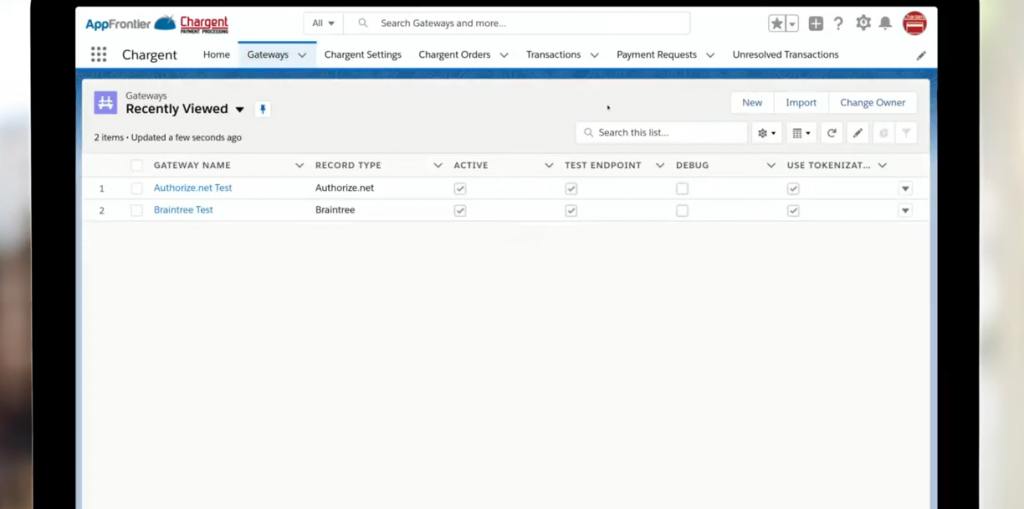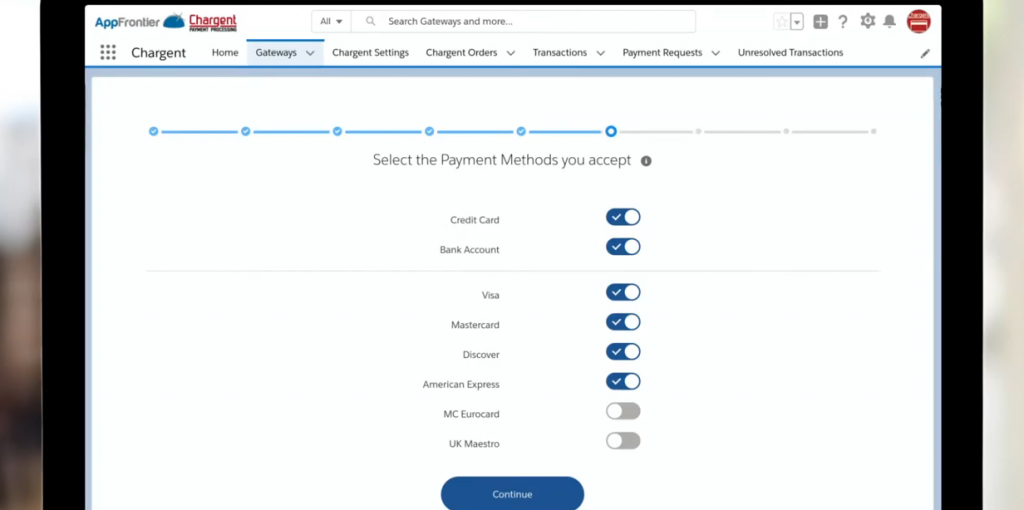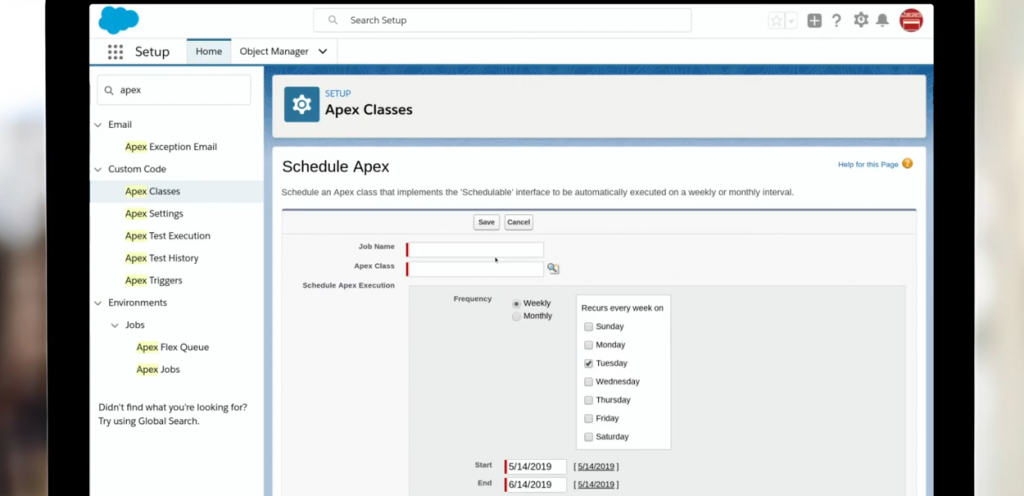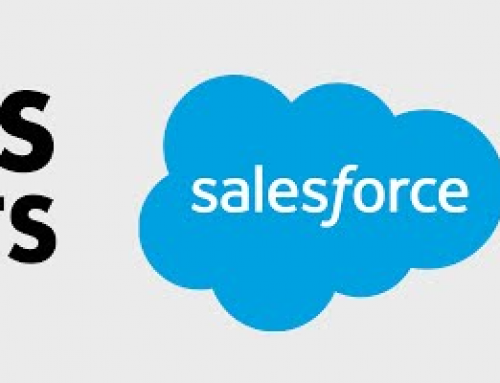Connect PayTrace and Salesforce. If you use Salesforce and you want to integrate to PayTrace in a robust way, this video will show you how to accomplish this quickly, using the best available tool for the job.
Watch the Video:
Or Read the Transcript:
Presenter:
Micaiah Filkins, Co-Founder & President, AppFrontier LLC
In this video, we’re going to show you how to integrate PayTrace with Salesforce in just a matter of moments. Let’s get started.
All right. Well, first off, install both the Chargent Base package, as well as the Chargent Orders package. And you can put both of them into your production organization.
Next, we’re going to configure Chargent. You’ve got some tips in the quick start guide, but that’s really why you’re on this video.
All right. So, we’re going to need to get into the Chargent Setup Wizard. So, to do that, I’m going to go to the App Launcher here in the upper left-hand corner. And just click on the waffle, and choose Chargent out of the available applications. I can simply go to my Gateways tab inside the Chargent application and click the “New” button. And in this case, we’re setting up PayTrace. So, yeah, we’ve got a payment gateway account. If I start typing, I can find it right here. And click “Continue.”

All right, it’s time to put in our PayTrace credentials. If you get confused at all, use the “View Gateway Documentation” link below. That’ll take you directly to the companion page that goes along with this video. In this case, it’s pretty straightforward. I just need a username, and I need my password, so I’m going to put both of those in here. I’m going to click “Sign In.” Chargent’s going to test my credentials for me and OAuth into the account. And here, I can see that everything’s been verified. I’m going to click “Continue.”
Next, the Chargent Setup Wizard asks if we should use tokenization. Chargent strongly recommends that all of our customers use tokenization. For more information on that, check out our explainer video right here.
Do be sure to consult our PCI guide for information on complete details about configuring Chargent to best reduce your organization’s PCI scope.
All right. Next up, we’ve got currency. What are you going to be using? On the screen, you can see the most popular ones with our Chargent customers. Do keep in mind, we support all government issued currencies that are
supported by your gateway.

Next up, are you going to use Payment Console? We sure hope you will. We think it’s a very slick way to take payments.
This was letting us know that the system is going to send an email on your behalf requesting the key. When you do get that, please bring that in and put it into the system to make sure everything works.
All right. What payment methods will you be accepting? Credit card and bank account, sometimes known as ACH, eCheck, or direct debit. And then which cards? So, sometimes folks don’t want to take American Express, so I could just toggle that off. I want to take all of these in my org, so I’m going to click “Continue.”
One of the nice features of Payment Console is that there’s a number of different ways that you could set up the buttons. You may want to do your charge button, you may want to just update a token, or possibly, you need to do an authorization and you don’t need to do charge. Simply just toggle whichever ones you need for your process.

And that’s it. Congratulations. In just a quick five minutes, you’ve successfully configured your new Chargent gateway. Let’s take a look at testing next.
Okay. Well, now that you’ve got your gateway set up in Salesforce, it’s time to do some test transactions. And we want to do this to ensure that Chargent was set up correctly. And also, this is a good way to get to understand how Chargent is going to help you take payments inside of Salesforce.
Now, this is critical to your success as a Chargent user. You have to complete extensive testing. Remember that this is your payment system. No organization will survive if they cannot get paid. And if you fail the test, there’s a good chance you won’t get paid. So please, take this seriously.
At a minimum, you’re going to want to create a few test charges right now. So, you can see the gateway setup guide for some help with that, and you can also take a look at some of the other videos on this channel.
Okay. Just a quick aside to talk about sending transactions in the Salesforce sandbox. So, when Chargent is installed in the Salesforce sandbox, transactions, they’re always sent to the payment gateway’s test account or their developer environment. We do this as a security precaution. We want to prevent real transactions being accidentally sent from your Salesforce sandbox environment.
When Chargent is installed in a production Salesforce environment, the “Test Endpoint” checkbox on the gateway record will allow you to select between sending payments to the live or the test environment.
So, a quick tip here, there’s a few exceptions to this rule about having different endpoints for live, and then for test. So, just note that we documented them in the companion page that goes along with this video, which we did link below. In those exceptions, there will be a single endpoint to send the transactions to, and then there’ll be different credentials for live versus test. It’s just something we want you to be aware of.
Let’s talk about transaction sync. So, Chargent has always sent charges and authorizations to the payment gateways and then recorded that result in real time as a transaction in Salesforce. Chargent can also update Salesforce records long after the initial transaction. So, this works well for bank account transactions that are returned non-sufficient funds, or NSF, or credit card authorizations that expire, or credit card charges that are charged back.
Two fields, transaction status and settlement date, can now be updated through a daily scheduled batch in Salesforce. The possible values of the transaction status are either final or non-final. If the status is final, then no more updates will occur for that transaction. The settlement date field stores the date and time when the transaction status is changed to final, such as settled or voided, after which it will no longer receive any updates.

So, to schedule the batch, we are just going to navigate to “Setup.” We’re going to go to develop “Apex Classes.” Click the “Schedule Apex” button, and choose the “Scheduled Batch Update Transaction Status.” I’m going to give it a name of Transaction Sync. I want it to be every day of the week, so I’ve selected all of those. It can start now, and I’m going to have it run for quite some time. And I like to see these things updated at 3:00 in the morning. And I’ll click “Save.”
So, there we go. We have scheduled the apex class. Refer to your gateway setup guide for additional information that’s unique to your gateway. Again, you’ll find that in the description below.
That’s it! We just integrated PayTrace to Salesforce in a matter of moments. Be sure to tell your boss. I think they’re going to be pretty impressed.
And if you’ve got any questions, please reach out. We’re always here to help.
Hey! Thank you for watching our video. And while you’re here, please subscribe to our channel. Click that notification bell for immediate updates. And if you’d like to talk payments, please get in touch. We’re always here to help.








